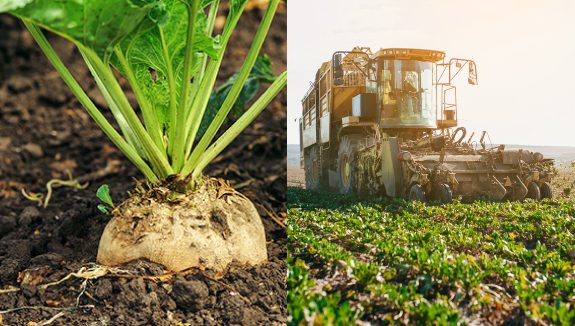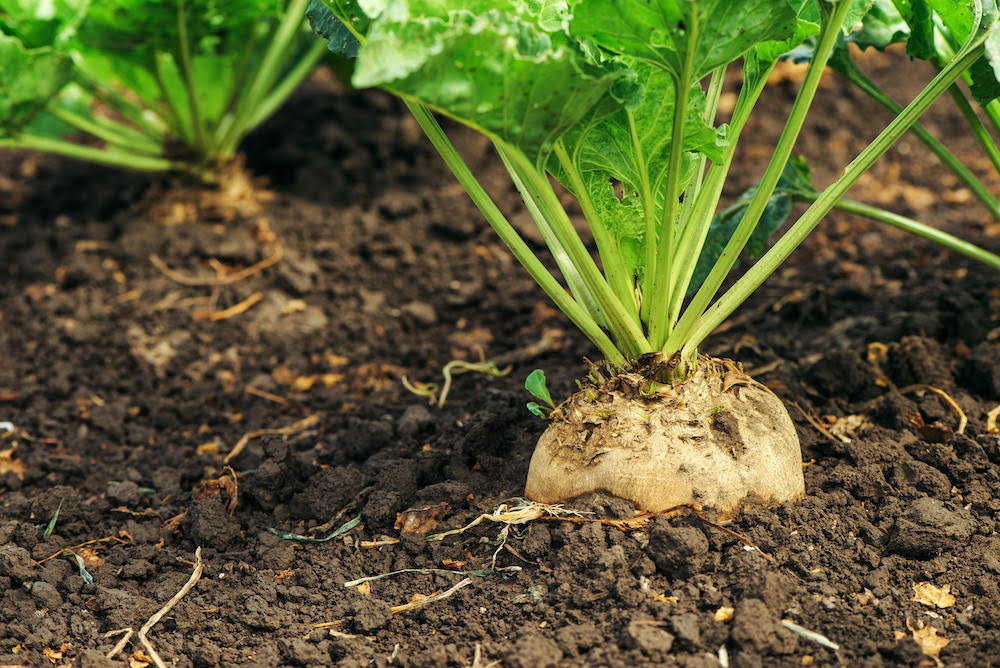The Relevance of Sugar Beet Vs Sugar Cane: a Closer Check Out Their Manufacturing Processes and Applications
The importance of sugar beet and sugar cane prolongs past their function as resources of sucrose. Each crop includes distinctive producing processes that influence their applications across numerous sectors. While sugar beet supports not just food production however likewise biofuels and fertilizers, sugar cane mostly offers the food field with important byproducts. Comprehending these distinctions exposes how each plant forms farming economies and industry techniques internationally, prompting additional exploration into their one-of-a-kind contributions.

Summary of Sugar Beet and Sugar Cane
Sugar beet and sugar cane are 2 main sources of sucrose, each with distinctive attributes and growing techniques. Sugar beet, an origin veggie, grows in pleasant environments - Sugar beet vs sugar cane. It is grown mostly in the North Hemisphere and needs well-drained soil. The plant typically expands to an elevation of regarding 18 inches, with a white, fleshy origin consisting of regarding 15-20% sucrose. On the other hand, sugar cane is an exotic lawn that grows in warm, humid conditions. It can get to elevations of as much as 12 feet and contains tall, jointed stems that store sucrose focus varying from 10-15%. The farming of sugar cane is labor-intensive and commonly includes hands-on harvesting. Both plants offer as essential farming products, supplying raw materials for sugar production and numerous spin-offs. Their growing practices substantially affect local economic climates and global sugar markets, making them indispensable to the farming landscape
Collecting Strategies for Sugar Beet and Sugar Cane
Gathering strategies for sugar beet and sugar cane differ markedly as a result of the one-of-a-kind characteristics of each plant. Sugar beet harvesting commonly employs specific machinery understood as beet farmers, which effectively uproot the beets from the dirt while decreasing damage. These makers make use of a series of blades to reduce the tops and raise the roots, making sure that the beetroots remain intact for processing.In comparison, sugar cane harvesting often includes 2 key methods: hands-on cutting and mechanical harvesting. Hand-operated harvesting, still prevalent in some regions, needs employees to reduce the cane stalks by hand using machetes. This technique enables selective harvesting but is labor-intensive. Mechanical harvesters have actually obtained appeal, employing rotating blades to cut and gather the stalks promptly. Both methods aim to enhance yield and high quality, with mechanical harvesting significantly taken on to fulfill rising production demands effectively.
Processing Techniques for Sugar Beet
After being gathered, sugar beets go through a series of processing steps to draw out sucrose properly. The primary step entails washing the beets to eliminate soil and impurities. Next off, the beetroots are cut right into thin strips referred to as cossettes, which increases the area for removal. These cossettes are after that subjected to warm water removal in a diffusion procedure, enabling sucrose to dissolve into the water.Following extraction, the juice contains impurities and is clarified using lime and warmth to speed up solids. The cleared up juice is then concentrated via dissipation, eliminating excess water and increasing sugar focus. To crystallize the sucrose, the focused juice undertakes additional evaporation and cooling, developing sugar crystals. These crystals are divided from the continuing to be syrup with centrifugation, dried, and packaged for distribution. This method guarantees a high yield of sucrose while preserving the quality of the end product.
Processing Methods for Sugar Cane
Handling sugar cane her comment is here includes a collection of steps designed to extract sucrose effectively. The procedure begins with harvesting, where fully grown sugar cane is cut and transferred to processing centers. When at the mill, the cane undergoes washing to remove contaminations. The next action is crushing, where mechanical rollers remove juice from the fibrous stalks.This juice is after that made clear utilizing heat and lime to eliminate put on hold solids and pollutants. Following information, the juice is vaporized to concentrate the sugar web content, resulting in a thick syrup. The syrup undertakes condensation, where sugar crystals form as the syrup cools down. These crystals are separated from the staying molasses via centrifugation.Finally, the sugar is dried and packaged for circulation. This complete handling method assurances that sugar cane yields a high-grade product, appropriate for numerous culinary and commercial applications, while making the most of the extraction of sucrose from the raw material.
Nutritional Distinctions In Between Sugar Beet and Sugar Cane
The contrast between sugar beet and sugar cane expands past their processing methods to encompass considerable dietary distinctions. Sugar beet contains not only sucrose however additionally a variety of nutrients, consisting of vitamin C, potassium, and magnesium. These nutrients contribute to its prospective health and wellness advantages, such as sustaining immune feature and maintaining electrolyte balance. In contrast, sugar cane primarily supplies sucrose with marginal degrees of vital nutrients.Additionally, sugar beet has a higher fiber web content, which can assist in digestion and advertise satiation. The existence of anti-oxidants in sugar beet might also offer protective effects against oxidative anxiety, a factor linked to different chronic diseases. While both sources are primarily used for sugar production, the dietary accounts recommend that sugar beet might supply added wellness benefits compared to sugar cane. This distinction is important for customers seeking greater than simply sweeteners in their diet plans.
Applications of Sugar Beet in Various Industries
A variety of sectors utilize sugar beet for its functional applications past sugar production. In the food industry, sugar beet works as a vital active ingredient in creating different processed foods, consisting of sweets and baked products, as a result of its all-natural sweetness. Furthermore, the pulp derived from sugar beet is used as animal feed, supplying a nutrient-rich source for livestock.In the biofuel sector, sugar beet is increasingly recognized for its potential in creating bioethanol, adding to renewable resource solutions. The agricultural field take advantage of sugar beet's by-products, which can be utilized as organic plant foods, improving soil health and fertility.Furthermore, sugar beet removes are utilized in drugs and cosmetics, where they operate as all-natural sugar and humectants. These diverse applications highlight sugar beet's function as a useful resource in improving sustainability and innovation throughout multiple industries, reinforcing its value in modern manufacturing practices.
Applications of Sugar Cane in Different Industries

Often Asked Concerns
What Ecological Impacts Are Connected With Sugar Beet and Sugar Cane Manufacturing?
The ecological effects of sugar beet and sugar cane production consist of soil deterioration, water use, chemical application, and habitat disruption. These variables add to eco-friendly inequalities, increasing concerns regarding sustainability in agricultural techniques connected with both plants.

How Do Sugar Beet and Sugar Cane Compare in Terms of Economic Stability?
The economic stability of sugar beet and sugar cane varies based on aspects like geographic location, manufacturing costs, and market demand - Sugar beet vs sugar cane. Both crops offer distinct benefits, influencing farmers' choices relating to farming and financial investment in various areas
What Are the Key Regions for Sugar Beet and Sugar Cane Cultivation?

Just How Does Climate Affect the Growth of Sugar Beet and Sugar Cane?
Climate substantially impacts the growth of sugar beet and sugar cane. Sugar beetroots grow in cooler temperature levels, while sugar cane calls for cozy, exotic conditions. Sugar beet vs sugar cane. Both crops rely on appropriate rainfall and sunlight for ideal growth and yield
Exist Any Type Of Significant Wellness Worries Related to Consuming Sugar From These Sources?
Health and wellness worries related to sugar intake consist of weight problems, diabetes mellitus, and heart problem. Both sugar click to read beet and sugar cane-derived sugars can contribute to these issues, particularly when consumed in too much quantities, regardless of blog their resource.